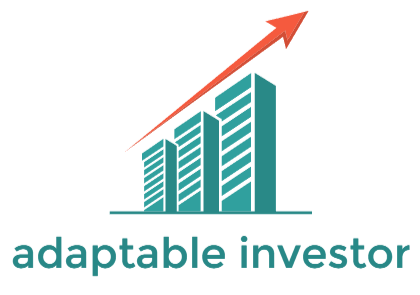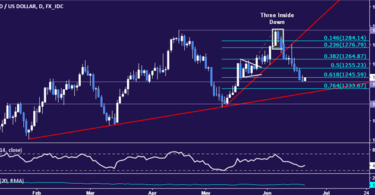The first quarter of 2023 is now behind us, and I have identified three main investment topics that will likely be of paramount importance for the rest of the year. Inflation in the U.S. and in Europe remains elevated despite all major central banks having raised their benchmark interest rates. The rotation to value stocks versus growth stocks could gain momentum as higher interest rates at some point will be the main theme not just for institutional investors but for individual investors as well, with the bond market anticipated to earn a lot of attention as the inverted yield curve in the U.S. financial market poses the risk of a recession. Lastly, oil prices may have dipped, but they remain high, and the unexpected shock of OPEC's decision in early April 2023 to cut its crude output sent oil prices above $81 per barrel to their highest price this year after dipping to nearly $66 per barrel, representing a rally of nearly 24%. Due to three key factors, I believe Shell PLC (SHEL) is one of the most interesting ways to play continued high oil prices.
OPEC's decision for oil output cuts is a catalyst for sustained revenue growth
On April 2, 2023, Saudi Arabia and other OPEC+ oil producers announced oil output cuts of around 1.16 million barrels per day, and on the following Monday when global financial markets opened, oil prices had gapped up to above $80 per barrel from about $75. Was this decision a surprise production cut that analysts did not expect? It can be argued that this was the case, and for sure this is bad news for inflation and for consumers. On the other hand, it is good news for Shell, as the company will have the opportunity to present higher revenue as long as oil prices remain high.
The high oil prices have not yet been fully reflected in Shell's stock price in my view as the stock has gained only 6.36% year-to-date. This could be explained by the fact that the stock has a Beta of less than 1.0. In other words, the stock according to statistics should move less than the broader market. Indeed, this is true of most mega-cap stocks as the S&P 500 has gained of 6.92% year-to-date.
The question is whether high oil prices can be sustained at levels above $80 per barrel or even $70 per barrel during the remainder of 2023. History can't predict the future, but we can try to find a plausible justification based on the fundamental law in economics, which is the law of supply and demand.
World oil demand is expected to remain strong during the rest of 2023
On March 15, 2023, the International Energy Agency raised its estimate for global oil demand in 2023 by another 100,000 barrels per day as rebounding air traffic and pent-up Chinese demand push consumption to record highs. The gains are expected to accelerate over the year.
The expected rebound in oil demand is due to at least two key factors: the rebound in air travel and the momentum picking up in the Chinese economy.

It seems that the Federal Reserve will have a tough time figuring out how to tame inflationary pressures as energy prices continue to rise following the OPEC cut, as energy prices have a knock-on effect on multiple areas of just about every supply chain.
Strong sales growth and improved profitability over the past two years
Looking at the financials, there are several things to like about Shell. The company reported revenue growth of 44.84% to $261.50 billion in 2021 and 45.82% to $381.31 billion in 2022. Gross profit and operating income increased by 55.02% and 123.22%, respectively, in 2022. Net profit in 2021 improved to $20.10 billion, up 192.72% year over year, and in 2022, Shell reported a net profit of $42.31 billion, showing growth of 110.48%.
The balance sheet is strong as Shell had a debt-to-equity ratio of 0.44. A key metric to monitor is free cash flow. The company reported positive free cash flows for the whole period of 2017 to 2022. In 2021, the free cash flow was $26.10 billion, and in 2022, free cash flow grew to $45.81 billion, an increase of 75%.
In terms of valuation, the stock has a price-earnings ratio of 5.10, a price-sales ratio of 0.57 and an enterprise-value-to-sales ratio of 0.66. These numbers imply that Shell may be undervalued.
In addition to its strong growth and financials, Shell has a dividend yield of nearly 3.5%. Its Beta of less than 1.0 makes it a defensive stock in the energy sector, and it has not rallied to its full potential despite the recent OPEC oil output cut.
Originally published on GuruFocus.com
I/we have no positions in any stocks mentioned, and have no plans to buy any new positions in the stocks mentioned within the next 72 hours.
The information presented has been prepared by GuruFocus.com or GuruFocus Investments, LLC, a registered Investment Advisor (“GuruFocus”). The information presented represents general observations and opinions of GuruFocus and should not be relied upon by you as investment advice and is neither a recommendation to enter into a particular transaction nor a representation that any security or strategy discussed is suitable or appropriate for you and your particular situation. As with any analysis, past performance is never a guarantee of future performance.
GuruFocus, its owners, directors, employees, respective clients and subscribers of GuruFocus.com may at any time own and trade securities discussed in this column. This may pose a conflict of interest and should be a significant factor you consider in evaluating the information presented. It is also possible that GuruFocus and its owner may have negative view of the securities discussed and would not recommend the securities presented as an investment. GuruFocus does not receive direct compensation from any third-party manager that may be discussed or featured. However, GuruFocus may receive indirect benefits such as referrals, notoriety or social media exposure.
GuruFocus’ evaluation methodology is dependent upon securities holdings data as reported by Rule 13F of the Securities Exchange Act. As a means of transparency to investors, Rule 13F requires certain large institutional investment advisors that have discretion over client assets to make public their securities holdings of certain securities on a quarterly basis. GuruFocus relies upon the reported 13F holdings as source data for its analysis. However, there are inherent limitations in 13F information that should be considered when relying upon analysis dependent upon 13F reported holdings such as, but not limited to the following: smaller investment advisors and/or those without discretion are not required to report holdings at all, not all security types are required to be reported and as with any third-party data, the holdings, share amounts and market values may be inaccurate, outdated, incomplete, or overstated. As with any analysis, past performance is never a guarantee of future performance.






